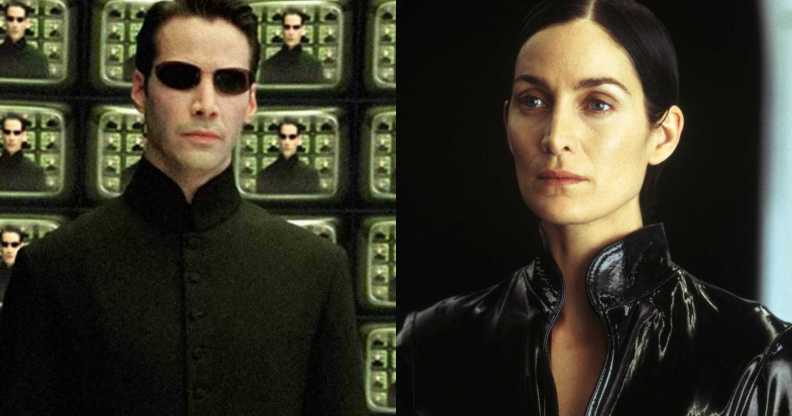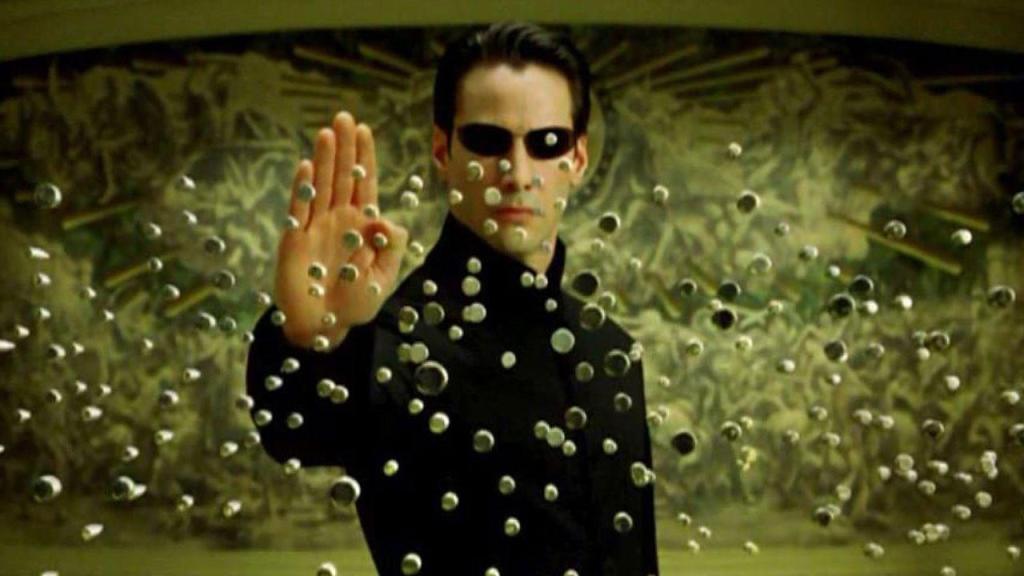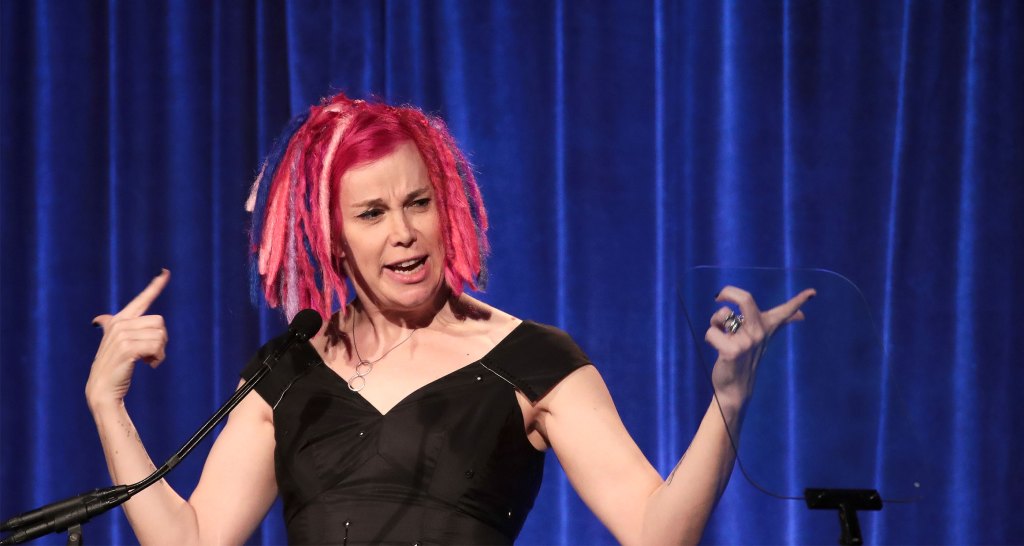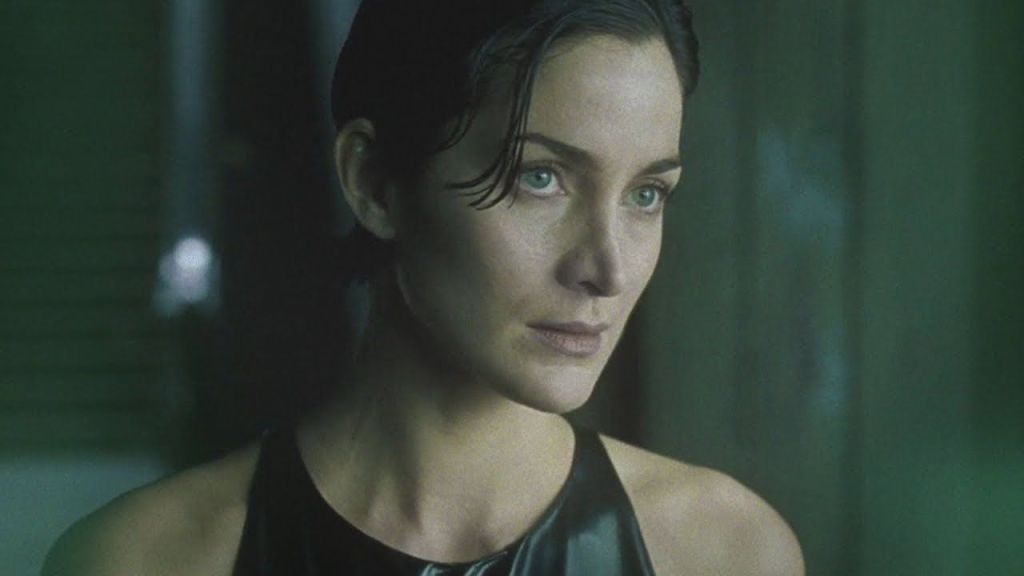The Matrix films are about Neo’s trans journey into becoming Trinity, author argues

Keanu Reeves and Carrie-Anne Moss as Neo and Trinity in The Matrix films. (Warner Bros)
In an extract from her new book Begin Transmission: The Trans Allegories of The Matrix, author Tilly Bridges takes a deep dive into the series’ trans allegory.
The Matrix is a confirmed and intentional trans allegory, written and directed by two transgender sisters, Lilly and Lana Wachowski.
They weren’t out as trans when the first three movies or The Animatrix [an animated anthology film produced by the Wachowskis, released direct-to-video after Reloaded] were made, but publicly came out as trans before the fourth movie. This changes the context for some of the films, which we’ll discuss along the way.
I want to remind you that these movies are fantastic humans vs machines sci-fi movies, and the first absolutely revolutionised action movies and special effects, and there’s also entire religious and philosophical metaphors to explore. All those things are well worth discussing.
The movies are so dense and have so many layers I’m in awe as a writer. But I’m only going to talk about the trans allegories. Please don’t take that as an indication I don’t think those other things exist or aren’t worth discussing, it’s just that these allegories are so densely packed with detail about the trans experience that it’s going to take this entire book to explain them.

Note that the very name, Matrix, means a set of rules/procedures that define how something works.
The society we all live in is our matrix (and yes, it does have you … well, many of you). It’s the cisgender binary we’re all forced into at birth without our consent. It restricts us and harms us in all sorts of ways, which these movies will show you time and again.
Neo’s our lead, and The Matrix is about his journey in coming to terms with the fact that he’s transgender. Reloaded is about all the ways society comes for you once you’re out as trans, and wondering if we would have transitioned if we knew how hard life would become. Revolutions is about dealing with our own internalised transphobia, and where we might be able to go in the future (or where we hope society might go). Resurrections is about detransitioning and retransitioning, and the co-opting and erasure of trans voices. But we have to go in order for everything to make sense.
Neo always presents as male in the movies, of course, but remember this is allegory and the first movie was also made in 1999. Here we are over 20 years later and we still don’t have a transgender sci-fi action movie lead. We can’t hold that against them.
The surface level story is about Neo accepting that he’s “The One,” and there will be much more on that later. But his journey is a trans one. His chosen name, “Neo,” literally means “new.” His deadname is “Thomas Anderson.” Thomas means “twin”, and “Anderson” means “son of Andrew”, and “Andrew” means “manly or masculine”.

This means his name roughly translates to “twin of the manly or masculine”. This is your very first indicator of just how intentional these allegories are. You don’t accidentally pick a name that means “twin of the masculine” for a trans allegory. And even if you somehow did, if that was the only evidence, then sure maybe it’s a coincidence. But it’s only the tip of the tip of the tip of the iceberg.
How the Matrix’s characters are part of its trans allegory
Morpheus, in mythology, is the god of dreams. In the Matrix, Morpheus is Neo’s superego and subconscious, and knows of his dream to be his true self. He knows the truth about Neo and spends every movie trying to help him accept it.
Cypher is Neo’s id, and his doubt. A “cypher” is literally a secret, a code that hides the truth. It plagues Neo, eating at him. His id is so sure that he’s in fact not trans and would be all too happy to just never think about it again. Neo’s doubt later is personified by Link and then Bugs, but those are very different kinds of doubt that we’ll discuss when those characters appear.
Trinity is Neo’s self-actualisation, the person he wishes to be. Her name alone tells you she’s Neo (one – the ego), Morpheus (two – the superego), and Cypher (three – the id) all rolled into one. Trinity’s in balance, in harmony, a whole person. Also note she is a woman. The other three are men.
Neo has to reconcile these supposedly male aspects of himself if he ever wants to attain self-actualisation. Note how similar Neo and Trinity look, even down to their hair. None of that’s by accident. Everything in a movie is a choice. And not only does this also hold through all four movies, I submit to you it is the entire point of all four movies. They tell the journey of one person, from Thomas Anderson to Trinity.

Agent Smith begins as the personification of society, and the passive transphobia it exhibits by designing a system (the cisgender binary) that does not even account for the existence of transgender people. Over the course of the first movie, and then through the sequels, he comes to represent active transphobia … the parts of society that acknowledge trans existence only so they can then attack it and try to make it impossible for us to exist within it.
Other important things to know before we start: the Oracle is Neo’s heart (later replaced by Bugs), Tank is the trans community (later replaced by Zion/Io), Lock is Neo’s fear, Niobe is Neo’s confidence, and the colour red is vital to understanding all four movies, wherein it stands for unequivocal truth. Know that it stands for truth now, and the explanation for why that is will come early in discussing the first movie.
Blue stands for doubt, and yellow for fear. Always. The mixture of these colours is also used to convey more complex things … purple shows you there’s truth and doubt, orange shows you there’s truth and fear. The green overcast of the original trilogy shows you the world the cisgender binary matrix has created is based in fear and doubt: yellow + blue = green.

All Agents, police and security guards across all movies are cis white men. This is also intentional. It’s showing you who benefits from the false cisgender binary, who set it up, and who extracts power from it to keep themselves at the top. This is also why the Architect and the Analyst are cis white men.
These are the bedrock of the allegories, the foundation everything else is built on and used to say all that the Wachowskis have to say. The good news is these are explained to you through the movies themselves. We’re going to go through all the movies, in order. Not exactly frame by frame, but it might as well be for as much as these movies have to say.
To truly understand the allegories you’ll need to go in order and read them in the order written, in the order of the movies’ release. Jumping ahead will only lead to confusion, so I don’t recommend it. But technically you can if you want to, I mean … I’m not the boss of you.
I can only show you the door. You’re the one that has to walk through it.
Extracted from Begin Transmission: The Trans Allegories of The Matrix by Tilly Bridges, released on 27 June.
Tilly will be doing book signings at Book Soup in LA on 3 August and at Skylight Books in LA on August 31.

How did this story make you feel?

